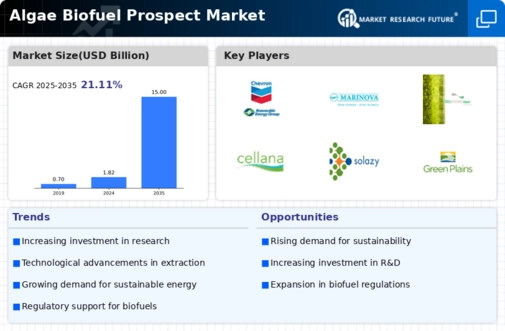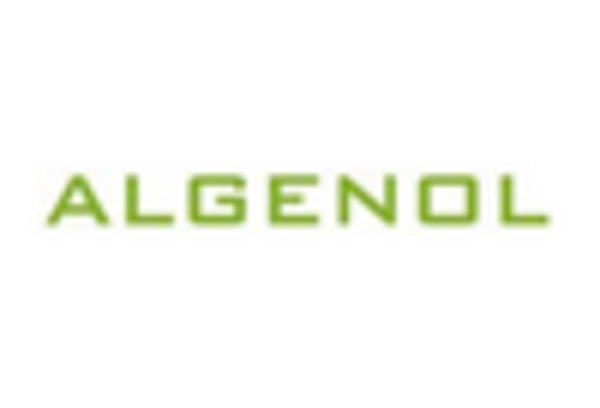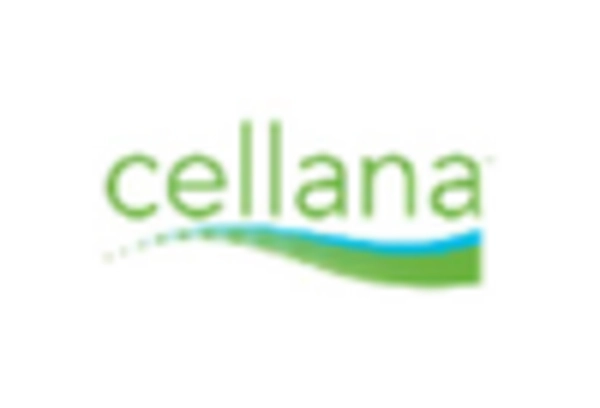Partnerships and Collaborations
Strategic partnerships and collaborations are emerging as a vital driver in the Algae Biofuel Prospect Market. Companies are increasingly joining forces with research institutions, universities, and other stakeholders to leverage expertise and resources. These collaborations aim to enhance the efficiency of algae biofuel production and address challenges related to scalability and commercialization. For instance, partnerships between technology firms and algae producers are focusing on developing innovative solutions for large-scale cultivation and processing. As of October 2025, such collaborative efforts are expected to yield significant advancements, potentially leading to breakthroughs that could reshape the Algae Biofuel Prospect Market and enhance its competitiveness in the energy sector.
Regulatory Framework and Support
The Algae Biofuel Prospect Market benefits from a favorable regulatory framework that encourages the development and adoption of renewable energy sources. Governments are increasingly implementing policies and incentives aimed at reducing carbon emissions and promoting sustainable energy solutions. For instance, tax credits and grants for algae biofuel production are becoming more common, which could potentially lower the financial barriers for new entrants in the market. As of October 2025, several countries have set ambitious targets for renewable energy adoption, which includes a focus on biofuels derived from algae. This regulatory support is likely to catalyze growth in the Algae Biofuel Prospect Market, fostering innovation and attracting investment.
Investment in Research and Development
Investment in research and development (R&D) is a critical driver for the Algae Biofuel Prospect Market. Increased funding from both public and private sectors is facilitating breakthroughs in algae biofuel technologies. Research initiatives are focusing on improving algae strains for higher oil yields and developing cost-effective extraction methods. Recent reports suggest that R&D spending in the biofuel sector has increased by over 20% in the past year, reflecting a growing recognition of the potential of algae as a renewable energy source. This influx of investment is likely to accelerate advancements in the Algae Biofuel Prospect Market, making it a more viable alternative to conventional fuels.
Rising Consumer Awareness of Sustainability
Consumer awareness regarding environmental sustainability is on the rise, significantly impacting the Algae Biofuel Prospect Market. As individuals and organizations become more conscious of their carbon footprints, there is an increasing demand for sustainable energy alternatives. Algae biofuels, known for their lower greenhouse gas emissions compared to traditional fuels, are gaining traction among eco-conscious consumers. Market data indicates that the demand for biofuels is projected to grow by approximately 15% annually, driven by this shift in consumer preferences. This trend is likely to encourage more companies to invest in algae biofuel production, thereby expanding the Algae Biofuel Prospect Market and contributing to a more sustainable energy landscape.
Technological Innovations in Algae Cultivation
The Algae Biofuel Prospect Market is witnessing a surge in technological innovations that enhance algae cultivation efficiency. Advanced cultivation techniques, such as photobioreactors and optimized nutrient delivery systems, are being developed to maximize biomass yield. These innovations not only improve productivity but also reduce operational costs, making algae biofuels more competitive with traditional fossil fuels. According to recent data, the efficiency of algae cultivation has improved by over 30% in the last few years, indicating a promising trajectory for the industry. Furthermore, the integration of automation and artificial intelligence in monitoring and managing algae growth is expected to streamline production processes, thereby attracting more investments into the Algae Biofuel Prospect Market.


















Leave a Comment